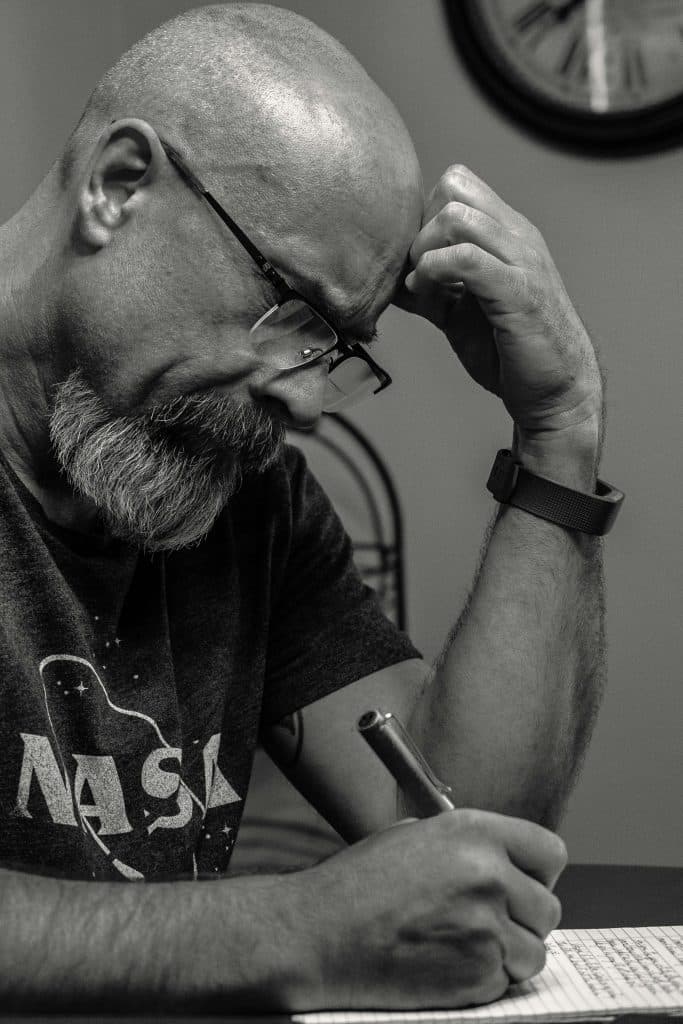Writing Through the Pain: A Guide to Crafting Meaningful Trauma Narratives
April 3, 2025
Turning personal trauma into a memoir is one of the most powerful ways to find meaning in pain. It’s not just about telling your story—it’s about healing, connecting, and inspiring. A compelling trauma memoir doesn’t just help the writer process their experiences; it offers readers solace, hope, and the profound reassurance that they are not alone.
However, writing about painful experiences requires significant effort. How much should you share? How can you create an engaging narrative without becoming overwhelmed? How do you maintain truthfulness while protecting your well-being and that of others?
The challenges of writing about trauma can prevent many from completing their books—or even starting them.
Anaïs Nin once wrote that writing allows us to “taste life twice, in the moment and in retrospect.” This is especially true when writing about trauma. Putting painful experiences into words offers an opportunity to relive, reframe, and find deeper meaning in past events. It’s not just about documenting the past—it’s about understanding it from a new perspective, one that can bring clarity and healing.
The good news? You don’t have to face this challenge alone. This guide will discuss best practices for creating truthful, responsible trauma narratives while empowering both writers and readers.
The Power of Reflection
The urge to write about trauma often connects individuals to a larger purpose. Revisiting the past can help uncover meaning, process experiences, and create something greater than oneself.

Many writers find healing through sharing their personal stories.
Writing allows for clarity, closure, and a deeper understanding of one’s journey.
Beyond personal growth, writing a trauma memoir creates a lasting legacy, ensuring that valuable lessons endure for future generations. Whether shared with a global audience or close family and friends, your story has significance.
Thomas Mann famously said, “A writer is someone for whom writing is more difficult than it is for other people.” Anyone who has attempted to put their deepest struggles into words knows exactly what he meant.
Writing about trauma isn’t just about remembering—it’s about reliving, shaping, and exposing vulnerable parts of oneself.
It can be exhausting and painful. But that difficulty is a sign that the story matters. If it were easy, it wouldn’t be real
The process of writing about trauma can be incredibly rewarding, yet it remains a challenging task. Emotional energy can be drained, and moments of paralysis may occur. This is why many individuals choose to work with ghostwriters, who help shape powerful yet manageable narratives.
Writing About Trauma Means Reliving It
Writing about trauma forces individuals to relive their painful past rather than merely recall them. Many start their memoirs with enthusiasm, only to become stuck or emotionally exhausted. Their stories are valuable, but the act of writing about pain presents unexpected challenges.
The primary challenge in writing a trauma memoir lies in the intense emotions that arise when revisiting past experiences.
Writing can bring back unresolved emotions, making it difficult to continue. Some days, words flow easily; on others, even sitting down to write feels impossible. Without emotional management techniques, burnout can occur before the book reaches its midpoint.
Turning real-life suffering into a coherent and engaging narrative is another difficulty. Trauma doesn’t always follow a clear beginning, middle, and end. Memories may be fragmented, and emotions don’t always make sense in hindsight.

Memoirists must also balance honesty with responsibility.
Writing a memoir means confronting hard questions: Should you name those who hurt you? How do you ensure truthfulness while avoiding legal issues and protecting relationships? What details should be kept private for your mental well-being?
Making these decisions alone can be overwhelming.
Many memoirists start with strong momentum but later begin doubting their work. Is this good enough? Will anyone care? Am I even a good writer? These fears often prevent people from finishing their books—or even starting them.
Support can transform the writing process at crucial points. Some writers seek help from therapists or writing groups. Others collaborate with memoir ghostwriters, who guide them through storytelling while reducing emotional stress and bringing their narratives to life.
Strategies for Success
A trauma memoir requires deep personal engagement, but with the right approach, it can be manageable. Approaching the writing process with intention helps maintain a balance between honesty and self-care while blending structure with creativity and vulnerability with boundaries.
Start with Self-Reflection
Before writing, ask yourself: Why am I writing this memoir?
Are you seeking personal healing? Do you want to help others? Are you hoping to make sense of your past? A well-defined purpose will anchor you through difficult phases of writing.
Success doesn’t have to mean bestseller status. Your goal might be to create a legacy for your family or self-publish your story to help others. Clarifying your objective helps determine your book’s structure.

Find a Comfortable Approach
Your memoir doesn’t have to follow a chronological order or start with the most painful events. Begin where you feel comfortable.
Journaling painful memories before shaping them into a book can help.
Be mindful of emotional limits. If a topic becomes too distressing, take a break or work on another section.
Writing a memoir requires endurance and patience—progress unfolds over time.
Choose the Right Narrative Structure
Real-life events don’t always follow a perfect storyline. Choosing the right structure helps organize your story:
- Chronological Approach: Writing events in the order they occurred.
- Thematic Approach: Organizing stories around lessons and pivotal moments rather than time.
- Dual Timeline Narrative: Weaving past events with present reflections to show growth.
A memoir ghostwriter can help shape your story while preserving your unique voice.
Be Honest, but Set Boundaries
Many memoirists worry about hurting others with their writing. While your story is yours to tell, it’s important to consider its impact. If needed, you can:
- Change names or identifying details.
- Focus on your journey rather than blaming others.
- Omit unnecessary details that don’t enhance the narrative.
Great memoirs balance truthfulness with emotional well-being.
Why Consider a Ghostwriter?
Writing a trauma memoir is one of the most personal and challenging writing endeavors. Many memoirists start with good intentions but feel overwhelmed along the way. Hiring a ghostwriter allows your story to be told with clarity, structure, and impact.

A professional ghostwriter:
- Helps shape raw memories into a compelling narrative.
- Maintains writing momentum despite emotional challenges.
- Offers an objective perspective to ensure the book resonates with readers.
- Reduces emotional strain by handling story flow and structure.
Jack London once said that writers must go after inspiration “with a club.” Determination is essential, but writing doesn’t have to be done alone. Ghostwriters help memoirists capture their stories with clarity and purpose, making the process less daunting.
Final Thoughts: You Don’t Have to Do This Alone
Writing about trauma is significant but challenging. It requires emotional resilience, storytelling skill, and a clear structure while processing difficult memories.
It’s no surprise that many individuals struggle to complete their books. But here’s the truth: you don’t have to do this alone. Support—whether from a writing group, therapist, or ghostwriter—can make all the difference in bringing your story to life.






























